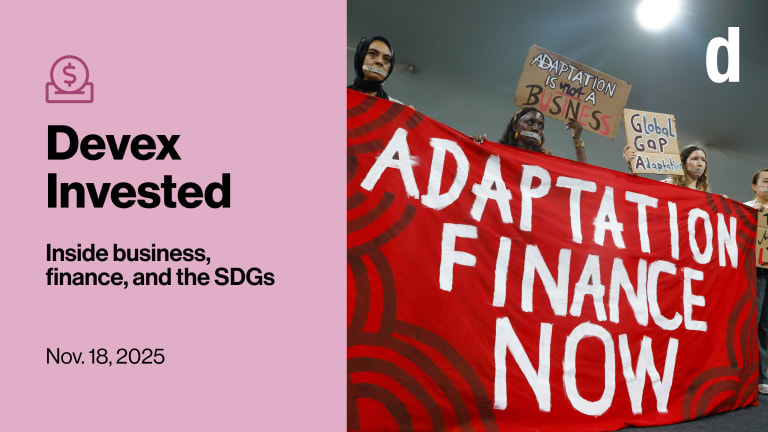
Despite the ever-louder rhetoric around the field, 2020 saw a sharp drop in blended finance deals across the world, according to a new report, which said their value collapsed from an average of $9 billion annually to about $4.5 billion.
Sign up for Devex Invested
The weekly newsletter on how business, social enterprise, and development finance leaders are tackling global challenges.
“The State of Blended Finance 2021” report by Convergence warned that even before the sudden drop, the amount of blended finance was paltry compared with the trillions of dollars needed to achieve the United Nations’ Sustainable Development Goals.
Convergence said it has tracked $160 billion in blended finance deals over the past decade.
Hurdles: The report identified key roadblocks to greater utilization of blended capital, including coordination problems with governments in lower-income nations and a lack of transparency around deals.
Such issues, along with low incentivization, also contribute to the fact that domestic capital in lower-income countries tends to “sit on the sidelines,” rather than get involved in blended finance deals, according to Convergence CEO Joan M. Larrea.
Private sector: Another issue is that private investors often only participate in blended finance as a one-off instead of on a repeated basis. Rael McNally, a portfolio manager at BlackRock, also said that blended finance is typically asking institutional investors to step outside their comfort zone in terms of risk.
Role for MDBs: Multilateral development banks and development finance institutions “have consistently been the most prominent investor group in blended finance,” the report found. However, Convergence said they need to rapidly scale up engagement with private sector investors to reach the dollar figures required by the SDGs.
Foundations and NGOs tended to make small deals, but ones with very concessional terms.
Africa remains attractive: Sub-Saharan Africa remained a primary destination for blended capital, even as the monetary value of deals saw a contraction, while Latin America experienced an uptick in inflows.









